The Effect of Introduction of Wind Energy System on the Energy Networks
Volume 8, Issue 5, Page No 28-34, 2023
Author’s Name: Ahmed Slimani1, Benyoucef Merah1, Mohammed Nasser Tandjaoui2,a), Chellali Benachaiba2
View Affiliations
1Department of Computer Science, Faculty of Science Exact, Tahri Mohamed University, Bechar, Algeria
2Department of electrical engineering, Faculty of Technology, Tahri Mohamed University, Bechar, Algeria
a)whom correspondence should be addressed. E-mail: tandjaoui.naceur@univ-bechar.dz
Adv. Sci. Technol. Eng. Syst. J. 8(5), 28-34 (2023); ![]() DOI: 10.25046/aj080504
DOI: 10.25046/aj080504
Keywords: Wind energy, Distributed network, Decentralized production, Sustainable energy, Hybrid system
Export Citations
The increase electricity production based on renewable energies sources responds to the requirements of sustainable development. In recent years, the investment in the wind energy sector has increased to satisfy green electricity generation and environment protection. Wind energy is currently the most competitive energy resource that is part of the world’s countries views on the future of energy production and exploitation and its impact on the environment, it plays a very important role to reduce the CO2 emissions injected by the energy sectors, namely transport and industry. Wind energy is a good alternative to fossil fuels as its ecological impact is low. This technology is developing rapidly of which the wind turbine industry is the most dynamic of the industries producing large equipment for power generation. Therefore, wind energy has a major drawback, which is the inability to predict accurately because of its uncontrolled fluctuations, which enter as a major component of energy flow problems within the electrical system. This paper presents the effects of wind power integration on the power quality of distribution network when the weak nature of the network in remote areas and the uncertainty of the wind are taken into consideration. The proposed model design has been tested in simulation using MATLAB/SIMULINK, where the results obtained confirm the electrical degradation in terms of quality in electrical networks integrating wind turbines, to ensure a clean electrical quality, the optimal solution is the integration of FACTS systems which will be the subject of the next paper.
Received: 21 August 2022, Accepted: 28 February 2023, Published Online: 24 September 2023
1. Introduction
Today more than 85% of the energy produced is obtained from fossil fuels (petroleum, coal, and natural gas) and nuclear energy, which generates strong environmental pollution by emissions of greenhouse gases affecting climate change or, in the case of nuclear, long-lasting radiation pollution, which is not yet resolved, of the storage of radioactive waste. The constant growth of energy consumption in all its forms and the associated polluting effects, mainly caused by the combustion of fossil fuels, are at the heart of the issue of sustainable development and the care of the environment in a discussion for the future of the planet [1, 2]. The massive use of fossil and fissile energies, even if it has invaded the entire field of human activity today, remains an epiphenomenon on the scale of human history; it appears through two small peaks, one during the 19th century with coal and the discovery of steam engines, the other in the 20th century with oil, gas and nuclear power [2, 5]. Two of the major challenges for our century are the fight against climate change and the diversification of the sources of energy that we currently use, to serve the needs of the poor nations which represent more than two- thirds of the population, the world needs to forge a new energy strategy, which, in order to respect the global environment, must first be based on sobriety and energy efficiency and inevitably use renewable sources which undoubtedly have an important role to play
The electricity industry thus seems to be backtracking, when most of the electrical energy was generated locally by small isolated systems for direct use. The old steam generators, used to provide heat and electricity, have found their modern equivalents in the form of micro-turbines, fuel cells, internal combustion engines and small gas turbines. In addition to economic interest, other arguments have argued in favor of a transition to small-scale decentralized energy systems; these include environmental impacts, the vulnerability of centralized energy systems in the event of an attack, and the reliability of electricity [1, 4]. With regard to technologies of decentralized energy production systems, there are currently two types of systems with a strong footprint: renewable energy systems and cogeneration systems. These systems, favored by the public authorities, have become an economically viable reality and are therefore imposed. With regard to renewable energies, the conversion devices range from a few tens of watts to a few megawatts. Wind power is the only one that is both inexpensive and easily exploitable. In addition to the production of wind energy on the grid, the market for small and medium-sized wind power plants, intended to supply isolated sites, is very promising and booming in Electricity Market’s energy production. Wind energy is the fastest growing renewable energy in the world. It is almost universally recognized as the most promising energy source for producing clean electricity in the short to medium term and it contributes to the preservation of the environment. The wind is an element whose study is very complex, its characterization depends on several parameters such as the measurement of the wind speed, its direction, the effect of the roughness of the ground, the effect of obstacles., the effect of the stability of the atmosphere, etc. In this study, we will present the technical anomalies produced by the integration of wind turbines in the distribution network.
2. Description of energy system used in the production of wind energy
Wind turbines always use a synchronous or asynchronous squirrel cage generator as a generator, where two main processes are applied: fixed speed and variable speed. A wind turbine is made up of a tower at its top is fixed the nacelle. The nacelle consists of a system for transforming wind energy into electrical energy with its control. Figure 1 shows the components of the electro-mechanical chain. Cables for transporting electrical energy, control and command elements, equipment for connecting to the low-voltage distribution network, are laid out inside the tower [3,6,12].

Figure 1. Components of the electromechanical coupling of wind turbine drive system
3. Conversion of wind energy into electrical energy
A sustainable development of the means of energy production based on wind energy will only be achievable with a decrease in implementation cost, so that they can be integrated into the energy production market [6]. The production of electricity from wind turbines or wind turbines in an isolated site requires the use of the electric machine – static converter assembly [3.13]. The wind turbine gets its energy from the wind, therefore there is a relationship between wind speed V and rotational speed ω, torque and power on the rotor of a wind turbine. The mechanical power that can be extracted from the wind is determined by the following expression:

ρ : Air density (kg/m3),
S : Surface crossed by air (m2), S = π. R2,
R : Wind turbine rotor radius,
V : Wind speed (m/s).
The power supplied by the rotor of the wind turbine is given by the following relation:
![]()
Cp : Coefficient depending on the shape of the rotor and the wind speed. Thus there is a linear relationship between the wind speed and the angular speed of the rotor [6]
![]()
ω : Angular speed of the wind turbine rotor.
The coefficient Cp in the wind turbine is a function of k, and it is given by the manufacturer according to the type of sensor as indicated in table 1.
Table 1. values of coefficients k and Cp for the wind turbine
| k | 0 | 1,3 | 2,1 | 2,7 | 3,4 | 5 | 5,8 | 6,3 |
| Cp | 0 | 0,1 | 0,2 | 0,3 | 0,4 | 0,3 | 0,2 | 0,1 |
We define the torque developed on the rotor of the wind turbine as follows:

In the context of the insertion of decentralized production units in the electricity networks, it will be necessary to study the means to implement these units for reactive power compensation and active power control, as well as the control of the rms value of the voltage. Medium power production units (usually < 600 kVA) are generally equipped with asynchronous cage machines.

Figure 2. Wind power conversion chain
In fact, the asynchronous cage generator is currently the most widely used electrical machine in the production of fixed speed wind power. This generator can operate at variable speed, through the use of power converters, and can generate electrical power output over a wide range of wind speeds. Figure 2 shows the complete structure of the conversion chain fitted with its control members. The scarcity of non-renewable energies, atmospheric pollution, global warming and nuclear risks have raised awareness that economic development that respects the environment, in which we live, is necessary [8, 9].
4. Mechanical regulation of wind turbine speed
From equation (2), we can see that the power produced increases indefinitely with the speed of the wind, which is not the case in reality. The safety devices of the wind machine ensure that the expression of power is distributed over different ranges of wind speeds (Figure 3).

Figure 3. Power response of a stationary wind generator
Figure3 shows that the wind turbine starts to generate power at a cut-in-speed of VD and reaches its rated capacity at VN and continues to produce rated power up to a wind speed of VM. At higher wind speeds, the power yield decreases, as can be seen from Figure 3[10].
5. The impact of wind turbine on electrical network
Traditional production is based on conventional thermal or nuclear power stations as well as on hydraulic power stations. This type of electricity production is flexible in use (due to the availability of primary energy) and meets the technical criteria for safeguarding the network, while renewable energies are highly dependent on the availability of the primary source and do not or hardly meet the criteria for safeguarding the network or for electrical pollution. In this section, the problems induced by the integration of wind generators into the networks, the various constraints for connecting centralized production to the network and finally the prospects for improving the integration of these wind generators into the network will be developed. The incorporation of wind turbines into the networks poses several problems. In this section, the various effects of their integration into networks will be introduced. The flow of current in this conductor will create a voltage drop ∆V, this voltage drop can be expressed as a function of the active and reactive powers passing through the conductor, either:

Figure 4. Typical configuration of a hybrid model (wind-diesel)

The voltage is therefore a local quantity because it differs at every point of the network. This quantity is therefore regulated locally.
It can therefore be seen that the voltage is dependent on fluctuations in power and on the impedance values involved depending on where it’s on the network. Often by zone on the network, by producing or absorbing the reactive energy using the production groups, capacitors, or FACTS systems (flexible alternative current transmission system’s)
On the transport network x >> r, then:
![]()
Rapid fluctuations in small voltage amplitudes are called flicker. In the case of wind turbines, these variations are due to fluctuations in wind speed, the mechanical limits of the wind turbine (e.g. pitch control) and the shadow effect caused by the passage of the blades in front of the mast. Fixed speed wind turbines are the most unfavorable from the point of view of these phenomena. The wind turbine technology that is best suited to limiting the impact on the grid of these variations is that completely interfaced with the grid via power electronics, thus allowing a certain decoupling between the turbine and the grid. Wind turbines, interface to the network via fully controlled converters equipped with IGBT transistors, currently the most widely used, generate high frequency harmonics (kHz), but these harmonics can be fairly easily limited unlike partially controlled converters, equipped with thyristors, generating low frequency harmonics requiring substantial filters to eliminate them. Wind generators, like most decentralized generators, are very sensitive to network disturbances and tend to disconnect quickly during a voltage drop or during a frequency variation [7, 8].
6. Behavior of an autonomous WDHS at different wind turbine speeds
Wind-Diesel Hybrid System (WDHS) can be a solution for remote areas of a large interconnected grid. Now the two power sources tested before are synchronized, in order to keep the voltage and frequency of our autonomous WDHS constant, with load variation and wind disturbance. Wind turbines convert the kinetic energy of the wind into mechanical energy and then into electricity. The blades of the wind rotor capture some of the energy contained in the wind and transfer it to the hub that is attached to the shaft of the wind turbine.
This then transmits mechanical energy to the electrical generator, which converts mechanical energy into electrical energy. The generator can then be linked directly or indirectly to the grid.
The combination directly with the network, which is the case in our study, requires the generator to run at “fixed” or very weakly variable speed by playing on the slip of the asynchronous machine. If the generator is indirectly linked to the grid, the introduction of power converters between the generator and the grid results in a decoupling between the frequency of the electrical network and the rotational speed of the electrical machine. This allows variable speed operation using of a synchronous, asynchronous or even special machine.
In this work, the operation of the complete system presented in figure 4, has been simulated in the MATLAB \ SIMULIMK environment where the power output by the wind turbine depends nonlinearly on the wind speed (Figure 5). The performance of the system has been considered with the parameters of deferent principal component of this model presented in the following table.
Table 2. Principal parameters of WDHS
| Wind | Vout = 575V / f = 50Hz | |
| turbine | P = 3Mw | |
| Rs (p.u) | Ls (p.u) | |
| 0.004843/0.1278 , 0.004377/0.1791 | ||
| ГL = 6.77, / Ci = 5.04 | / FF = 0.01 in (p.u) | |
| Np = 3 | ||
| Diesel | Vout = 5kV, / f = 50Hz | |
| generator | P = 2MW and Q = 500VAR | |
| Vdc = 45V, / Rst = 0.0036 (p.u) | ||
| Np = 2 | ||
The WDHS system chosen in this work uses a 30kV with a 27MVA the same a parameter of the diesel generator where it is connected in a B1 bus bar, and the wind turbine is connected in the B_WT side, where it maintains a voltage of 500 V and a power of 850kVA delivered by generator of the wind turbine, the proposed load varies between 50kW and 17MW.
The characteristic of the wind turbine presented in figure 5 gives the wind speeds ranging from 4m/s to 12m/s, this shows that the position of the maximum of the power depending on the rotational speed changes with the wind speed. If the wind speed is for example fixed in 10 m/s, the power supplied by the turbine will describe the curve drawn by red color, and the nominal wind speed giving the nominal mechanical power (1pu = 3MW).

Figure 5. Characteristics of the wind turbine
The aim of variable speed is to adapt the speed of the turbine to the speed of the wind to continuously work at maximum power. In this context, our study is based on a fixed speed of around 10 m/s that show in figure 6.

Figure 6. Wind speed fixed at 10 m/s
The simulation results show the proper functioning of our WDHS. At the start of the simulation, the wind turbine begins to provide active power but remains insufficient. To compensate for the lack of power, the diesel generator is primed. The regulation of voltage and frequency in the case of constant wind is ensured by the diesel generator.
Hence, the speed and mechanical torque of the turbine shown in figures 7 and 8 respectively, indicates that the mechanical torque generates variations which are due to the mechanical part of the wind turbine, depending on the construction, location or other external phenomena, and the electromagnetic couple is oscillated at the beginning until the instant 3s, where it stabilizes.
Figures 9 and 10 present the active and reactive powers measured and references by blue and red colors respectively, the results obtained show that the oscillations presented before the instant 0.5s and after the instant 1.5s are caused by different wind variations, which make the energy system unstable
The voltage and power delivered by the Asynchronous machine of the wind turbine are displayed in figures 11 and 12, when the power is beginning to stabilize at time 1,5s and the voltage remains sinusoidal throughout the simulation period.
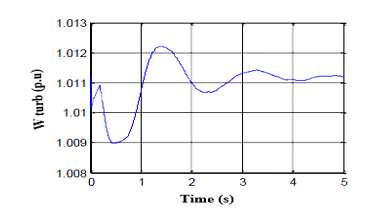
Figure 7. Rotor speed of turbine
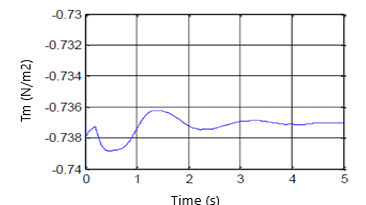
Figure 8. Torque of turbine

Figure 9. Active energy of the system

Figure 10. The system energy reactive power

Figure 11. Asynchronous machine voltage of turbine

Figure 12. Asynchronous machine power
When the WDHS underwent a variation of the active load and the wind speed and was still weak. In this case, the diesel generator supports the power demand. On the hand, at low wind speeds both the diesel generator is required to feed the load, on the other hand When the wind power exceeds the load demand, the diesel generator must be put into the under-powered state. In this case, the diesel generator excitation system is used as a grid voltage controller to maintain it at its nominal value. The load is considered constant throughout the simulation period. The simulation results presented by different figures like (figure 13, 14, 15, 16, 17 and 18) showed that the intermittent nature of wind turbines imposes an issues that affect the power quality of the main electricity grid, to ensure an optimal electrical power, it’s important the use the FACTS systems (Flexible Alternative Current Transmission Systems) to maintain controllable reactive power flow between the generating units and the utility network. Dynamic compensation of reactive power is an effective means of safeguarding power quality as well as voltage stability.
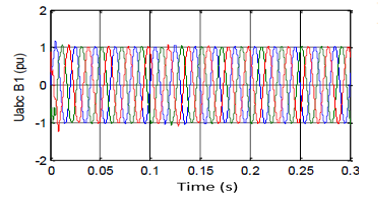
Figure 13. Busbar connection voltage in B1
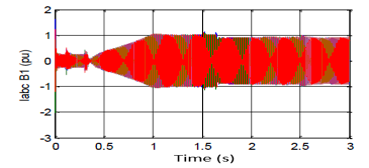
Figure 14. Busbar connection current in B1
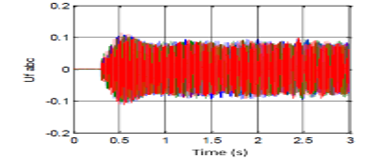
Figure 15. Busbar connection voltage in B_wt

Figure 16. Busbar connection current in B_wt

Figure 17. The current sequence Iq in B_wt with refference current

Figure 18. The current sequence Id in B_wt with refference current
7. Conclusion
The significant expansion of wind energy requires solving a series of technical economic questions. A current energy source, wind energy is the most advanced technology due to its installed power and recent improvements in power electronics and control. In addition, the applicable regulations favor the increasing number of wind farms due to the attractive economical reliability.
The system studied uses a set of very different equipment intended to coexist in a cogeneration structure supplying an isolated load. To better understand the nature of the interactions between the different subsets of this system, an approach was adopted to study the dynamics of each subsystem. The connection of a diesel generator (DG) to distribution networks greatly affects the performance and reliability of the networks.
This paper focuses on the impact of DGs on electrical network control and protection arrangements. Thus, the study of hybridization was made by following the key elements of the system: the wind turbine, and the connection of the assembly. At first glance, we placed this subject in its socioeconomic context. The latter is marked by the findings of environmental deterioration caused by the ever-increasing use of fossil fuels.
In addition, the difficulties of transporting the fuel used to supply the DGs are a classic means of producing energy in isolated areas, and clearly show the need for a renewable energy source. Thus two complementary issues were addressed such as the continuity of electricity production accompanied by good quality to be supplied to sensitive customers. However, our studies on this vast problem which is the integration of renewable sources, namely wind turbines in the conventional network, remains in a dynamic of improvement.
The technological development in wind power generation have solved several problems presented in large wind farms connected to low-power transmission grids
A dynamic study over longer periods, taking into account energy storage and switching sources, could also be added to the present models. The integration of the wind power can be encouraged by the development of hybrid system, combining wind energy with diesel generator, with an optimized management of energy system.
The impact of the wind on the quality of the electrical energy is decisive because it disturbs the electrical parameters of the network during integration. For this, the strengthening of control systems is mandatory or the use of smart control methods is strongly recommended. Finally, to ensure the optimal quality of electrical energy and given the randomness of the wind, we have integrated FACTS which will be the subject of the next paper
- M. N. Tandjaoui, C. Benachaiba, O. Abdelkhalek, “Role of power electronics in grid integration of renewable energy systems”, Journal of Electrical Engineering, Vol. 16, No. 1, 2016.
- S. A. Zegnoun, M. N. Tandjaoui, M. Djebbar, C. Benachaiba, B. Mazari, “Power quality enhancement by using D-FACTS systems applied to distributed generation”, International Journal of Power Electronics and Drive System, Vol. 10, No. 1, March 2019, pp. 330~341
- M. N. Tandjaoui, C. Benachaiba, O. Abdelkhalek et B. Denai, “Renewable energy and its impact in power quality of distribution systems”, SSC5’2012, College of Applied Sciences. Umm Al-Qura University. Makkah, April 16-18, 2012.
- M.N. Tandjaoui, M. Haidas, C. Benachaiba, “Intégration des éoliennes pour la Production d’Energie Electrique en Algérie – Site Tindouf- ” , 10th international Meetings on energucal physics, Journal of Scientific Research, N°. 0 vol. 1, pp 183-188, University of Bechar, Algeria, 2010.
- S. M. Shinde; K. D. Patil; S. S. Khairnar; W. Z. Gandhare, “The Role of Power Electronics in Renewable Energy Systems Research and Development”, 2nd International Conference on Emerging Trends in Engineering & Technology, 16-18 December 2009, Nagpur, India, IEEE Xplore, 22 Junuary 2010.
- M. N. Tandjaoui, C. Benachaiba, M. Saidi, Y. Mouloudi, B. Denai and O. Abdelkhalek, “ Apport des éoliennes dans les réseaux électriques-Utilisation d’un SVC”, 11th international Meetings on energucal physics, University of Bechar, Algeria, 2011.
- F. Blaabjerg; F. Iov; R. Teodorescu and Z. Chen, “Power Electronics in Renewable Energy Systems”, 12th International Power Electronics and Motion Control Conference, 30 August 2006 – 01 September 2006, Portoroz, Slovenia, IEEE Xplore: 10 February 2009.
- M. N. Tandjaoui, C. Benachaiba, O. Abdelkhalek, B. Denai and Y. Mouloudi, “The Impact of Wind Power Implantation in Transmission Systems”, TerraGreen 13, Libanon, Energy Procedia, Elsevier, 2013.
- F. Lov, M. ciobotarn and F. Blaabjerg, “power Electronics control of wind energy in distribution power systems”, 11th International Conference on Optimization of Electrical and Electronic Equipment, 22-24 May 2008, Brasov, Romania, IEEE Xplore: 19 August 2008.
- Himri, Y., Rehman, S., Draoui, B., & Himri, S, “Wind power potential assessment for three locations in Algeria”, Renewable and Sustainable Energy Reviews, 12(9), 2495-2504, 2008.
- F. Boukli Hacène, N. Kasbadji Merzouk, L. Loukarfi, “Analyse statistique et élaboration d’un atlas éolien de la vallée du Cheliff ”, Revue des Energies Renouvelables, Vol. 10 N°4, pp. 583 – 588, 2007.
- Himri, Y., Rehman, S., Mostafaeipour, A., Himri, S., Mellit, A., Merzouk, M., & Merzouk, N. K, “Overview of the Role of Energy Resources in Algeria’s Energy Transition”, Energies, 15(13), 4731, 2022.
- O. Gergaud, B. Multon, H. Ben ahmed, “Modélisation d’une chaîne de conversion éolienne de petite puissance”, Electrotechnique du Futur, pp. 17-22, Nancy 14-15 novembre 2001.
Citations by Dimensions
Citations by PlumX
Google Scholar
Crossref Citations
No. of Downloads Per Month
No. of Downloads Per Country
